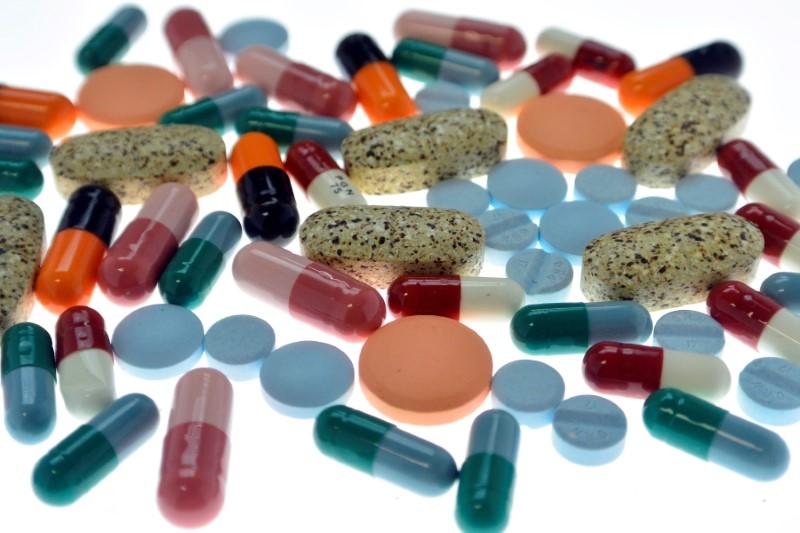
CHICAGO (Reuters) – (The writer is a Reuters columnist. The opinions expressed are his own.)
Americans do not agree on much these days, but we are united on the cost of medicine.
Large majorities of Republican, Democratic and independent voters say they would be more likely to vote for candidates in this year’s midterm elections who are committed to bringing down the cost of prescription drugs, according to a poll released last week by the Kaiser Family Foundation (KFF).
“The public feels strongly about doing something on drug prices and wants to see action,” said Tricia Neuman, senior vice president and director of the program on Medicare policy at the foundation. “They’re almost indifferent to what action is taken, so long as it works.”
That “do something, do anything” attitude goes a long way toward explaining the Trump administration’s “blueprint to lower drug prices” unveiled last week.
Some of the ideas might help, but the plan bypasses an obvious remedy – one that President Donald Trump embraced as a candidate: allowing Medicare to negotiate drug prices directly with pharmaceutical companies.
Seniors on Medicare are more interested than most in drug prices, since they tend to have more chronic conditions and use more medications. And what they have seen lately has not been pretty. Average per-capita costs in the Medicare Part D prescription drug program rose at a 4.4 percent annual rate between 2013 and 2016, and are projected to rise 4.7 percent annually through 2026, according to KFF analysis of federal data.
Medicare’s drug benefit is relatively new. Part D insurance was created under the Medicare Modernization Act of 2003, and the first plans were sold in 2006. Today, Medicare accounts for 29 percent of all spending for U.S. retail prescription drugs, but the law contained a sop to the powerful pharmaceutical lobby that helps explain today’s drug price inflation problem.
The law states that the secretary of Health and Human Services “may not interfere” in negotiations between pharmaceutical companies and prescription drug insurance plan providers. “It was a remarkable phrase to slip in,” Neuman said, “and it was designed to keep the pharmaceutical industry happy.”
Imagine: a buyer that controls nearly one-third of all pharmaceutical buying has its hands tied when it comes to negotiating price. Instead, it relies on the negotiating muscle of the hundreds of private Part D insurance providers who sell plans to Medicare enrollees. That makes the Medicare drug program unique among federal health programs- the Medicaid program contains mandatory drug price rebates, and the Department of Veterans Affairs (VA) requires that drug providers charge no more than the lowest price paid by any private-sector buyer. The VA pays 40 percent less than Part D, according to a 2011 research study published in Health Economics.
PROMISE OF ‘IMMEDIATE CHANGE’
The Trump plan identifies four problems that the administration intends to address: high list prices for drugs, a “lack of the latest negotiation tools,” high and rising out-of-pocket costs for consumers, and “foreign governments free-riding off of American investment in innovation.” The plan contains dozens of proposals and poses a long list of questions for exploration.
Rather than empower Medicare to negotiate directly, the blueprint would give private plans more authority to negotiate by loosening requirements that they cover certain drugs. That would allow them to threaten to drop drugs when manufacturers refuse to cut prices – but it could also reduce availability to patients, said Neuman.
The plan also calls for cutting out-of-pocket costs by requiring drug plans to pass along manufacturer discounts and rebates. That might help enrollees with big drug bills for serious chronic conditions – but it also could push up insurance premiums.
The administration also proposes a cap on total out-of-pocket costs. “That could provide real help to people with serious medical conditions and very high drug bills,” Neuman said.
Part D requires enrollees to pay 25 percent of program costs plus co-pays, but there is no cap on total out-of-pocket costs. But more than 800,000 enrollees not protected by special low-income subsidies reached so-called catastrophic levels of spending in 2016, according to Avalere Health, a consulting and research firm.
In 2018, the catastrophic level starts at $5,000 in combined spending by enrollees and insurers- at that point, enrollees pay 5 percent of drug costs- the federal government pays 80 percent and Part D plans pay 15 percent.
And that payment structure kicks in only after an enrollee passes through the notorious “donut hole,” the gap in coverage that begins this year when your combined spending hits $3,750. At that point, and until spending hits $5,000, you pay 35 percent of the cost of brand-name drugs and 44 percent of generics. The Affordable Care Act gradually closes the gap, and it will disappear entirely for brand name drugs in 2019 and generics in 2020.
The donut hold reforms increased the number of beneficiaries who reached the catastrophic coverage level by 50 percent from 2013 to 2016, notes Kelly Brantley, vice president of Avalere.
“It sounds like a bad-news story, but it actually means more people are getting out of the coverage gap more quickly.”
 0 comments
0 comments





